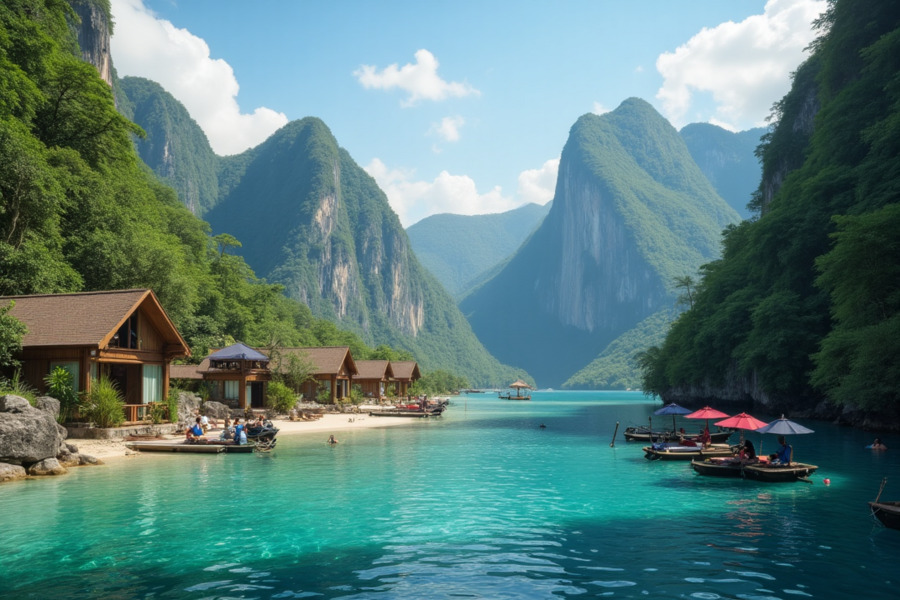≡-Gúdar-Javalambre, La Palma, Montsec, and Sierra Morena Power a Booming Astrotourism Movement Across Spain with Dark-Sky Reserves, Scientific Exploration, and Sustainable Rural Wonders Is Stargazing the Next Big Travel Surge for Conscious Explorers Worldwide? – Viral of Today
<> Viral of Today <>
Home » Spain Travel News » Gúdar-Javalambre, La Palma, Montsec, and Sierra Morena Power a Booming Astrotourism Movement Across Spain with Dark-Sky Reserves, Scientific Exploration, and Sustainable Rural Wonders Is Stargazing the Next Big Travel Surge for Conscious Explorers Worldwide? Tuesday, July 29, 2025Spain’s Astrotourism Movement Offers a Model for Sustainable and Experiential Travel WorldwideObservers within the global travel industry have been describing Spain’s expanding role in astrotourism as a meaningful pivot toward sustainable travel, with rising implications for how destinations around the world may shape their future tourism offerings. The country’s growing number of Starlight-certified locations—which had reportedly exceeded 60 destinations and 17 reserves—was being interpreted as more than just a domestic success; it appeared to reflect a broader shift in the priorities of modern travelers.Rather than relying on commercial expansion or traditional resort development, many of these Spanish regions were seen embracing low-impact, small-scale tourism that placed emphasis on dark sky preservation, scientific learning, and community engagement. Analysts following the trend had started to suggest that Spain’s model could serve as a compelling template for other countries aiming to enhance ecotourism, especially in rural areas that had been historically overlooked by mainstream tourism.The preference for authentic, educational, and environmentally conscious experiences was reportedly becoming a stronger influence in destination planning. These emerging patterns pointed to a collective rethinking within the tourism sector, where natural wonder, scientific depth, and cultural respect were being seen as equally essential as comfort or convenience.Global Travel Trends Inspired by Spain’s ExampleAccording to international travel observers, Spain’s dark-sky leadership was believed to be playing a role in reshaping global travel trends. With growing interest in nature-based, off-grid experiences, especially after the widespread disruptions of the pandemic, astrotourism was gaining momentum as a desirable, low-impact alternative.Several shifts were being identified in global traveler behavior:An uptick in demand for Starlight-certified destinations or places with strict light-pollution controlIncreased interest in educational and eco-conscious travel activitiesRising participation in off-peak seasonal tourism, thanks to year-round appeal of stargazingThese patterns suggested that the future of travel might prioritize personal enrichment and environmental awareness over volume-driven, high-carbon excursions. Stakeholders in tourism were beginning to view such offerings as a way to revive rural economies and reduce strain on overcrowded urban destinations.Montsec Range: A Learning Center in the StarsThe Montsec Range in Catalonia had been highlighted for its remarkable combination of astronomical visibility and scientific outreach. With atmospheric conditions ideal for stargazing, this area had developed into a popular family-friendly and educational destination. At the heart of the experience was the Montsec Astronomical Park, where visitors could take part in interactive telescope sessions, view shows at the digital planetarium, and explore science-themed installations.It was understood that Montsec’s appeal extended beyond technical astronomy. Curated astrotourism trails had been designed to link celestial exploration with the surrounding natural scenery, creating a well-rounded offering for travelers. Reports indicated that these programs, often tailored for schools and families, helped introduce younger generations to the wonders of space while encouraging environmental appreciation.Montsec was being recognized as an example of how informal education, sustainability, and leisure could be combined to form an enriching travel experience that had broad appeal across age groups and interests.Sierra Morena: A Monumental Reserve Powered by CommunityIn Andalusia, the vast Sierra Morena area—spanning Huelva, Seville, Córdoba, and Jaén—was described as the largest certified Starlight Reserve in the world, covering over 400,000 hectares and comprising six nature parks and 57 municipalities. What made Sierra Morena especially notable, it was said, was the deep community involvement behind its development.Local communities were reportedly active participants in both the creation and maintenance of astronomical viewpoints and educational programming, helping to ensure that the benefits of tourism remained within the region. The project’s success was seen as a powerful example of bottom-up sustainable tourism, where locals are not just hosts, but stewards of the land and sky.The reserve had reportedly become a global model for dark-sky preservation, offering insights into how large-scale environmental tourism could be economically viable, scientifically relevant, and socially inclusive.La Palma: Dual Recognition and a Cosmic IdentityThe volcanic island of La Palma in the Canary Islands had been gaining global attention for its commitment to protecting night skies and for being the first Spanish region to receive both Starlight Reserve and Starlight Destination certifications. Known for its pitch-black skies and rigorous light pollution regulations, La Palma had become one of the most sought-after locations for astrotourism in the world.Central to this reputation was the Roque de los Muchachos Observatory, regarded as one of the most sophisticated astronomical facilities globally. Tourists were reportedly drawn to the island for more than just its scientific prestige—activities such as solar observations, astrophotography workshops, celestial navigation lessons, and educational trail walks had made La Palma a comprehensive stargazing destination.Experts suggested that La Palma had managed to build an identity that was not only scientific but also emotive, where travelers could experience a cosmic connection while appreciating the island’s raw beauty and cultural authenticity.Gúdar-Javalambre: Stargazing at High AltitudesIn the mountainous terrain of Aragon, the Gúdar-Javalambre region was being praised for its elevated landscapes, crystal-clear skies, and proximity to cutting-edge scientific research. Holding both the Starlight Reserve and Destination designations, this area had been described as one of the leading sites for science-based tourism in Europe.Anchoring its growing reputation was the Javalambre Astrophysical Observatory, a major center for European astronomical studies. Supporting institutions like the Network of Star and Galactic Viewpoints and the Astronomy Outreach and Practice Center in Arcos de las Salinas had also been instrumental in enhancing visitor experience.What stood out in Gúdar-Javalambre, according to travel planners, was the seamless integration of scientific infrastructure, local community involvement, and natural preservation efforts. The region was emerging as a vital case study for rural tourism development, offering immersive opportunities to engage with astronomy, geography, and local traditions simultaneously.Expanding the Starlight Network in 2025In an important step forward, Spain reportedly expanded its Starlight network by adding six new certified sites in 2025, thereby reinforcing its leadership in this niche tourism sector. These additions were said to reflect a broader national strategy aimed at dispersing tourism into lesser-known regions, while also advancing conservation goals and public education.Each new location, observers noted, was not just selected for its sky quality but also for its potential to support eco-tourism, rural economies, and local cultural development. This method of destination selection was believed to help establish identity-driven tourism zones, where astronomy becomes the gateway to a more holistic exploration of place and purpose.The Road Ahead for Sustainable TravelLooking forward, travel experts believed that Spain’s success in astrotourism was likely to influence destination development strategies across multiple continents. Countries seeking to diversify beyond traditional attractions—like beaches or city landmarks—were reportedly studying Spain’s model as a forward-thinking alternative.The alignment of scientific infrastructure, community engagement, and environmental protection was being seen as a viable tourism blueprint for the 21st century. Rather than pursuing mass-market expansion, the emphasis was shifting toward depth, resilience, and meaningful connection.From the observatories of Gúdar-Javalambre to the family-friendly paths of Montsec, and from La Palma’s pristine skies to Sierra Morena’s community-driven conservation, Spain was said to be offering more than just beautiful views of the stars—it was offering a vision of tourism that’s intellectually enriching, ecologically balanced, and emotionally resonant.If other nations embrace this approach, astrotourism could evolve into a mainstream global movement, transforming how people experience travel and deepening their bond with the natural world and the universe above.
This information will surprise you!
See also
- Read until the end to discover everything.
- Important information you need to know.
- Interesting facts and helpful tips.
Conclusion
Did you enjoy the news? Keep following us daily!













